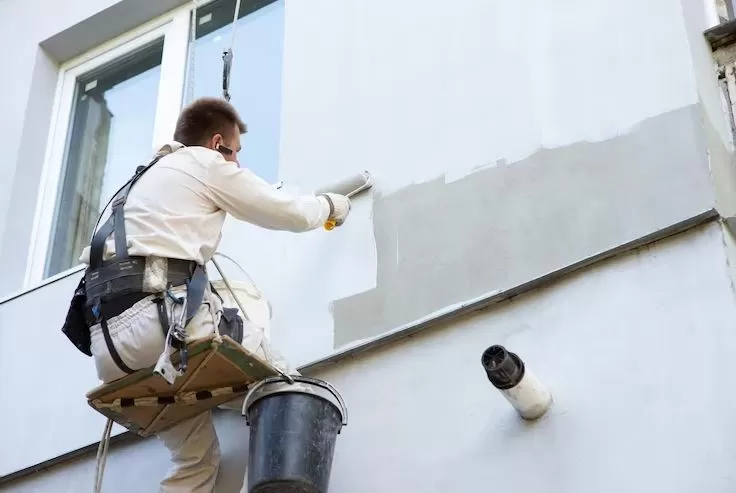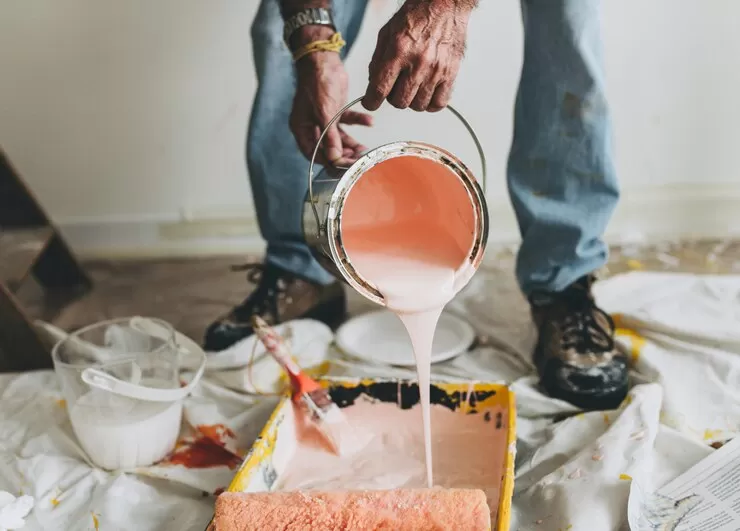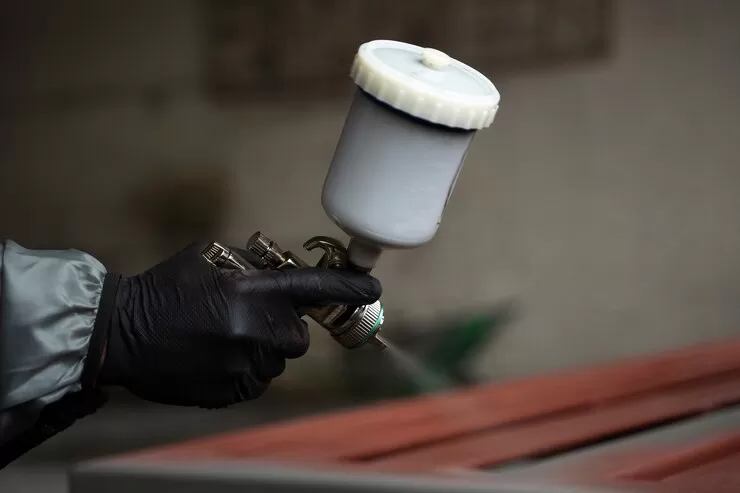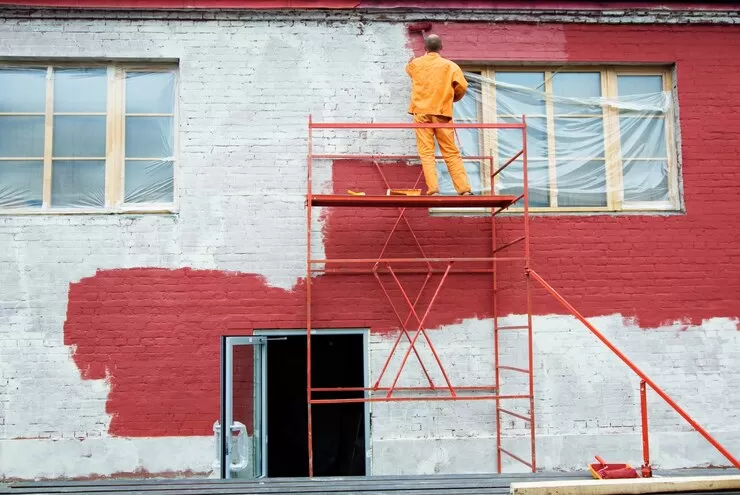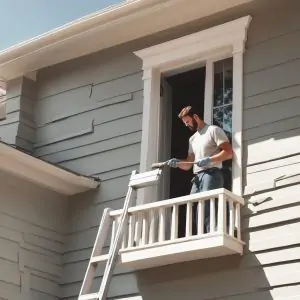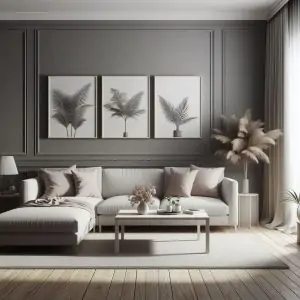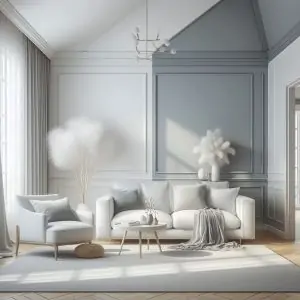Choosing the best temperature for painting outside is crucial for a successful and long-lasting exterior house painting, especially in the diverse climate around Sydney, Australia. The optimal temperature for painting outside typically falls between 50 to 85 degrees Fahrenheit (10 to 29 degrees Celsius). This range ensures proper drying time, adhesion, and longevity of the paint.
When tackling an outdoor painting project, it’s essential to take both air temperature and surface temperature into account. It is imperative to note that extreme temperatures, be it too hot or too cold, can significantly compromise the quality of your paint job.
Therefore, it is highly recommended to avoid painting during such conditions to achieve the best results. Sydney’s climate, with its variable seasons, requires careful consideration of the weather conditions.
Top Exterior Paints in Tune with the Best Temperature for Painting Outside
Selecting the right exterior paint type is as crucial as choosing the best temperature for painting outside. When it comes to monitoring the temperature for painting outside, the type of paint you use significantly impacts the overall durability and appearance of the finished project. Here is a breakdown of the best types of paint for outdoor use:
1. Latex Paints:
– Overview: Latex paint has been a popular choice since the 1950s. It is water-based, making it environmentally friendly and easy to clean.
– Advantages: Latex paint has low volatile organic compounds (VOCs), a fast drying time, and is easy to apply.
– Recommendation: We suggest Sherwin Williams Duration Exterior Paint for the best exterior latex paint. It is known for its exceptional durability, self-priming features, resistance to mildew, and the ability to complete the job in just one coat.
2. Acrylic Paints:
– Overview: Acrylic paint is another common type, offering better durability and elasticity compared to latex.
– Advantages: Acrylic paint can withstand direct sunlight effectively. However, it is chemical-based, which makes handling a bit more challenging.
– Considerations: Cleaning spills may require paint thinners, and harmful paint fumes are a concern. Additional coats may be needed for coverage.
– Recommendation: For an affordable option, Behr Pro Acrylic is a reliable choice for exterior painting projects.
3. Oil-Based Paints:
– Overview: Alkyd or oil-based paint is known for its strong resin solvent, providing excellent durability against sun damage.
– Considerations: It can be challenging to handle and requires careful application. This type is recommended for smaller surfaces or iron-painted surfaces.
– Environmental Impact: The stronger chemicals in oil-based paint can be harmful to the environment, necessitating proper disposal measures.
Before you embark on your exterior home painting, 7CPM considers the best temperature for painting outside and the best paint to ensure a beautiful and long-lasting finish. Each type of paint has its unique advantages, so selecting the one that aligns with your project requirements is key to achieving optimal results.
Different Conditions and the Best Temperature for Painting Outside
Whether you’re planning to paint during the scorching heat of summer or the chilly days of winter, understanding the best temp to paint outside and how environmental factors affect your paint job is crucial for a successful and lasting finish.
Hot Weather Considerations:
In excessively high temperatures, achieving an optimal paint job can be challenging. Here’s what you need to keep in mind:
– Proper Binding: Extreme heat can hinder the proper binding of paint, leading to issues like peeling or cracking once it dries. Latex paints, although excellent for most exterior projects, may pose challenges in the heat as they tend to dry out quickly, compromising adhesion.
– Avoiding Bubbles and Blisters: Painting when it’s too hot, especially above 90 degrees Fahrenheit, can result in bubbles and blisters forming in the paint. It’s advisable to choose a cooler time and the best outdoor temperature to paint to prevent these issues,
Cold Weather Challenges:
Painting in cold weather comes with its own set of challenges that can impact the overall quality and longevity of your paint job:
– Curing and Drying Issues: If the temperatures drop too low, below 35 degrees Fahrenheit, within 36 hours after application, your paint may not cure or process correctly. This can lead to unsightly bubbles and bumps when spring arrives. The best results are achieved when painting in temperatures not below 50 degrees Fahrenheit.
– Thickening of Oil-Based Paint: Cold weather causes oil-based paint to thicken, resulting in stiffened paintbrushes and thicker paint application. This leads to less coverage per gallon, making it essential to consider the type of paint you’re using in colder conditions.
– Extended Drying Time: Cold temperatures slow down the drying process of paint, necessitating more extended intervals between coats. This is especially crucial when working with darker shades that contain more colourant.
Cold temperatures affect the consistency and drying time of paint. Paint manufacturers may recommend low-temperature additives to enhance adhesion and resistance to staining or cracking in chilly weather.
Exterior Painting Temperature And Humidity
Moisture levels in the air play a significant role in the success of your outdoor house painting project:
– Adhesion Challenges: Excess humidity, above the recommended 40-70% range, makes it difficult for paint to adhere properly to surfaces. This can lead to bubbling and peeling, particularly problematic when painting wood, which absorbs moisture and swells.
– Leaching Issues: High humidity areas may experience leaching, characterised by brown or white discolouration in the paint. This aesthetic problem can be an unwelcome consequence of painting in overly humid conditions.
– Compromised Protective Film: Moisture in the air can compromise the development of the protective film layer of your paint, diminishing its protective qualities. Striking the right balance in humidity is essential for optimal paint performance.
Excessive water vapour, particularly in direct sunlight, can lead to blistering in latex paint. It’s crucial to choose the best time to paint house exterior and refrain from going over-drying paint with a brush or roller to avoid issues.
In regions like Sydney, where humidity levels can fluctuate, it’s advisable to choose a paint that resists mildew and bacteria growth. This prevents the unsightly green and black spots that often appear on exterior surfaces.
Rainy Weather Precautions:
Painting during or after rain is never advisable, but if you find yourself in such conditions:
– Adequate Drying Time: Allow ample time for your exterior surface to dry before applying any paint, especially after recent precipitation. Waiting for 4-8 hours after rain is essential for a completely dry surface, ensuring a better bond and minimising future problems.
In conclusion, painting in challenging conditions demands careful consideration of exterior painting temperature, humidity, and other environmental factors. By being mindful of these challenges, you can navigate through them successfully and achieve a paint job that stands the test of time.
Rely on 7CPM to Choose the Best Temperature For Painting Outside
Residential painting is an art, and at 7CPM, we are your trusted artists, ensuring that your home’s exterior is adorned with the finest strokes of paint, perfectly synchronised with Sydney’s ever-changing seasons.
Our professional house painters specialise in both interior painting and exterior painting, providing top-notch painting services tailored to your home’s unique needs. Leave the daunting task of choosing the best time to paint outside to us, we’ve mastered the delicate dance between temperature and paint application.
With 7CPM, you’re not just getting a paint job; you’re investing in the longevity and beauty of your home. Trust us to transform your vision into a reality, enhancing your curb appeal and protecting your property with the utmost care and expertise.

